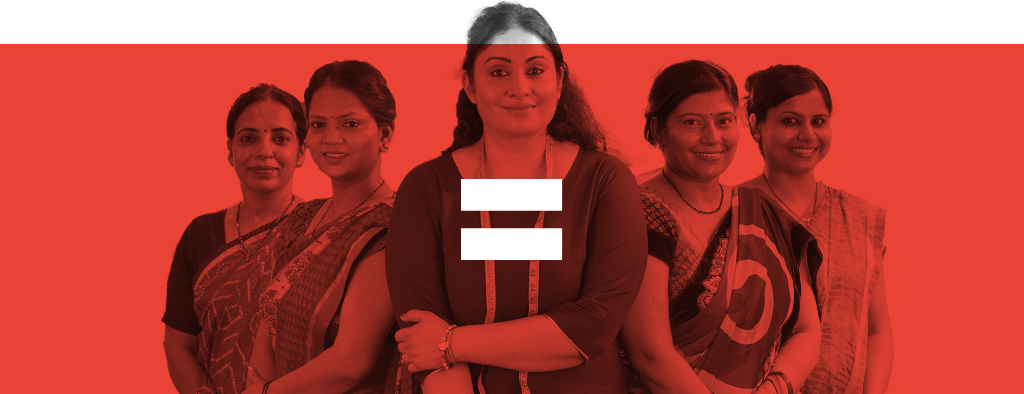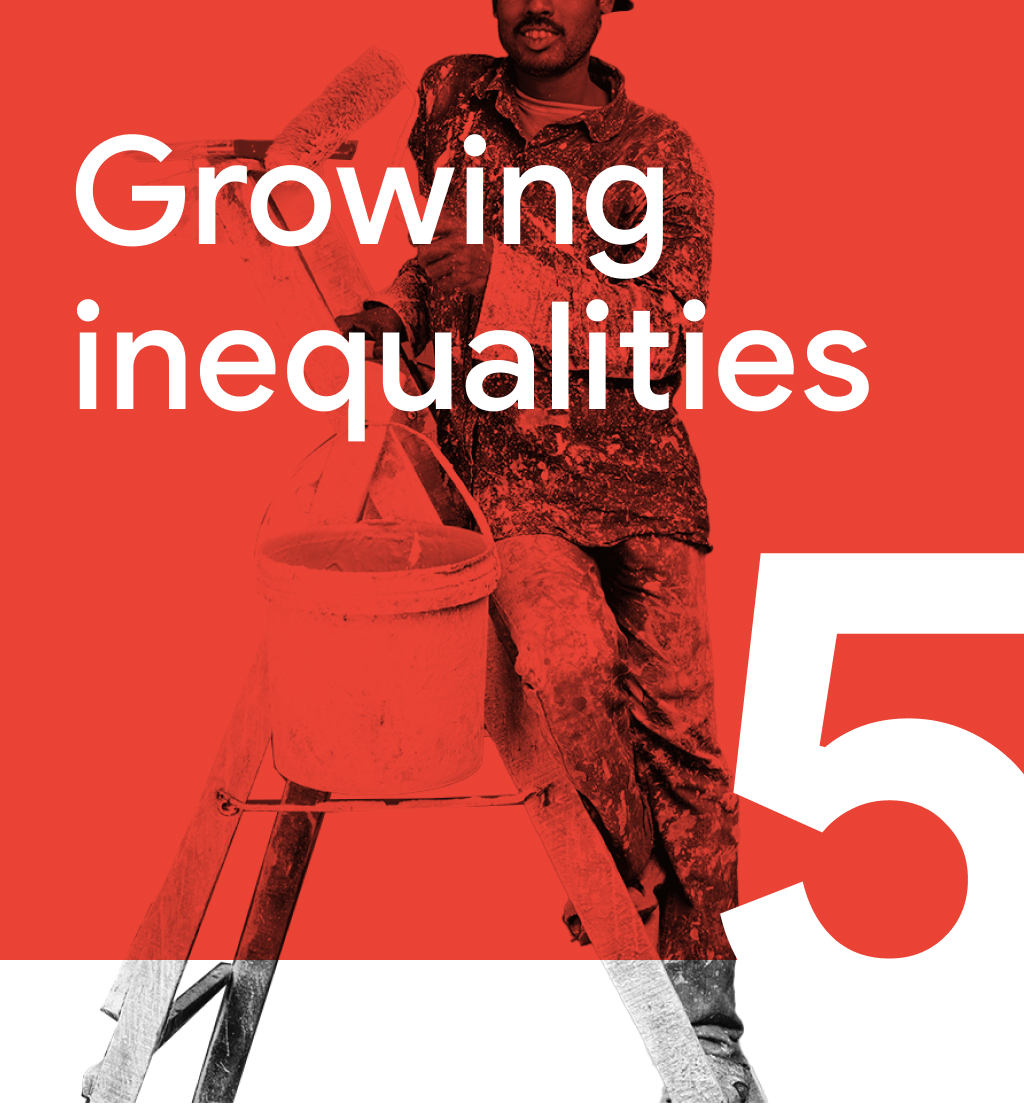
While everyone’s way of life has undoubtedly shifted this past year, the pandemic didn’t affect everyone the same way. It not only exposed existing inequalities, but accelerated them. People are turning to the internet for help: whether they’re existing internet users with fresh financial woes, or newcomers with more basic needs, consumers are searching for ways to overcome the challenges they face.
Dubbed the “inequality virus,” the pandemic has exposed many societal fractures along the lines of wealth, race, and gender. While many of these inequalities existed before COVID-19, the pandemic has played a role in exacerbating them, and the most vulnerable in society have been disproportionately hit.
Lower income households experienced a higher concentration of job losses36 while their children missed twice as many days in a school year compared with those from high income families.37

To overcome these inequalities, people are searching online for solutions to help themselves and their communities. Their searches range from unemployment benefits and “buy now pay later” financing options to topics on discrimination and women’s rights, reflecting their growing interest in social issues.

Unfortunately, not everyone has equal access to the support systems they need. The world’s growing reliance on technology means it’s crucial to equip the less privileged with access to digital solutions. Factors like unstable internet access, technical illiteracy, and language barriers can prevent people from joining the rest of the world online, and exacerbate the inequity they already experience.

Indeed, rising searches for local translations, line speed tests, and even free internet services reflect a growing section of society struggling to keep up. When cities shut down during the pandemic, millions of migrants across India had to return to their homes, many in rural areas. With lower access compared to urban centers, these workers and their families lost jobs and learning opportunities.38 Widespread digital migration, on the other hand, has brought more users online from nonmetropolitan areas in India, hastening the need for the digital ecosystem to evolve to address their specific needs through the acceleration of vernacular, voice, and video solutions.39
People recognize that these societal inequalities cannot be solved by governments and nonprofits alone. The expectation is now also on brands to help drive meaningful change.40 Perceived to be more ethical and competent,41 businesses are uniquely positioned to boost customer loyalty and trust by driving social change. This means that consumers will embrace brands who not only reflect diversity in their campaigns, but take action to create equity in societies as well.

Finding familiarity through local language
Searches show the anxiety that consumers face when transacting in a foreign language. In fact, up to 40% of consumers won’t consider making a purchase unless they can access information in their local language.42 With more new users coming online from non-metropolitan areas, the demand for local language is continuing to grow. In India, 86% of users use Google to search in their regional languages.
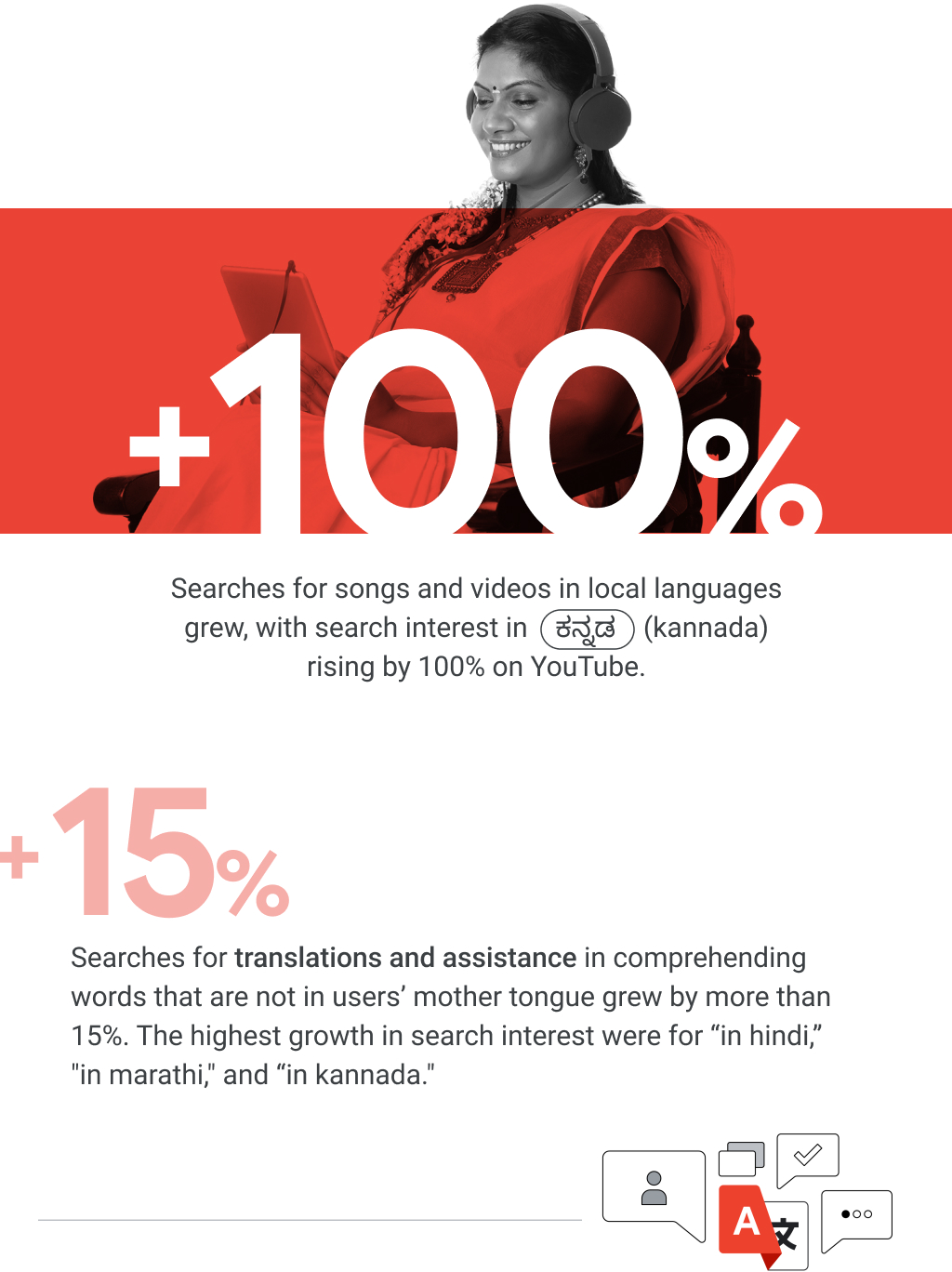
Access to stable and affordable internet
As more needs are being fulfilled online, people are increasingly focused on ensuring that they have reliable and affordable internet access.
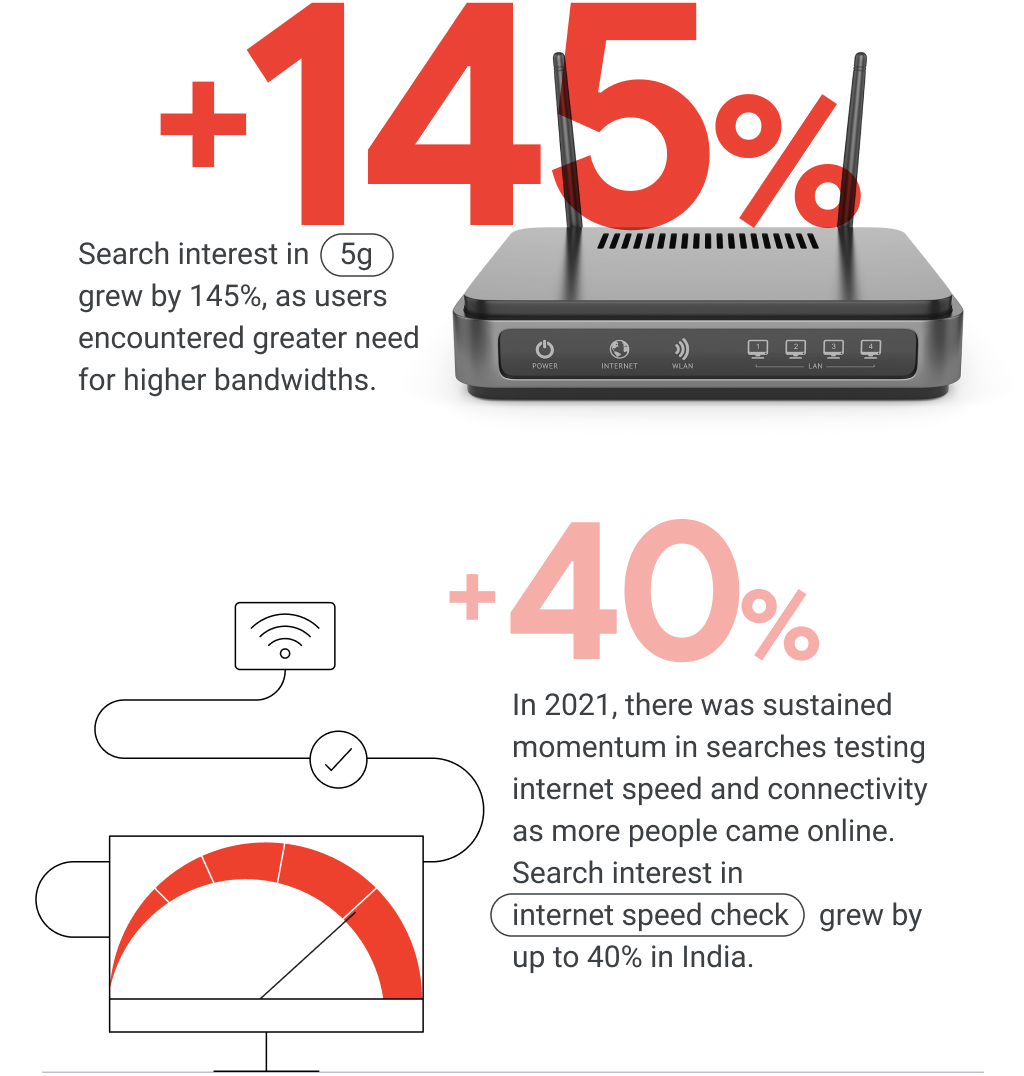
The need for financial support
India has been experiencing high unemployment rates fueled by waves of COVID-19,43 and this has led consumers to search for different ways to alleviate economic concerns. Whether it’s a business grant or a cash loan, people in India are looking for financial support to tide them over in an uncertain year. Women in particular are showing more concern, as their unemployment rates stand at 1.2X the national average.44
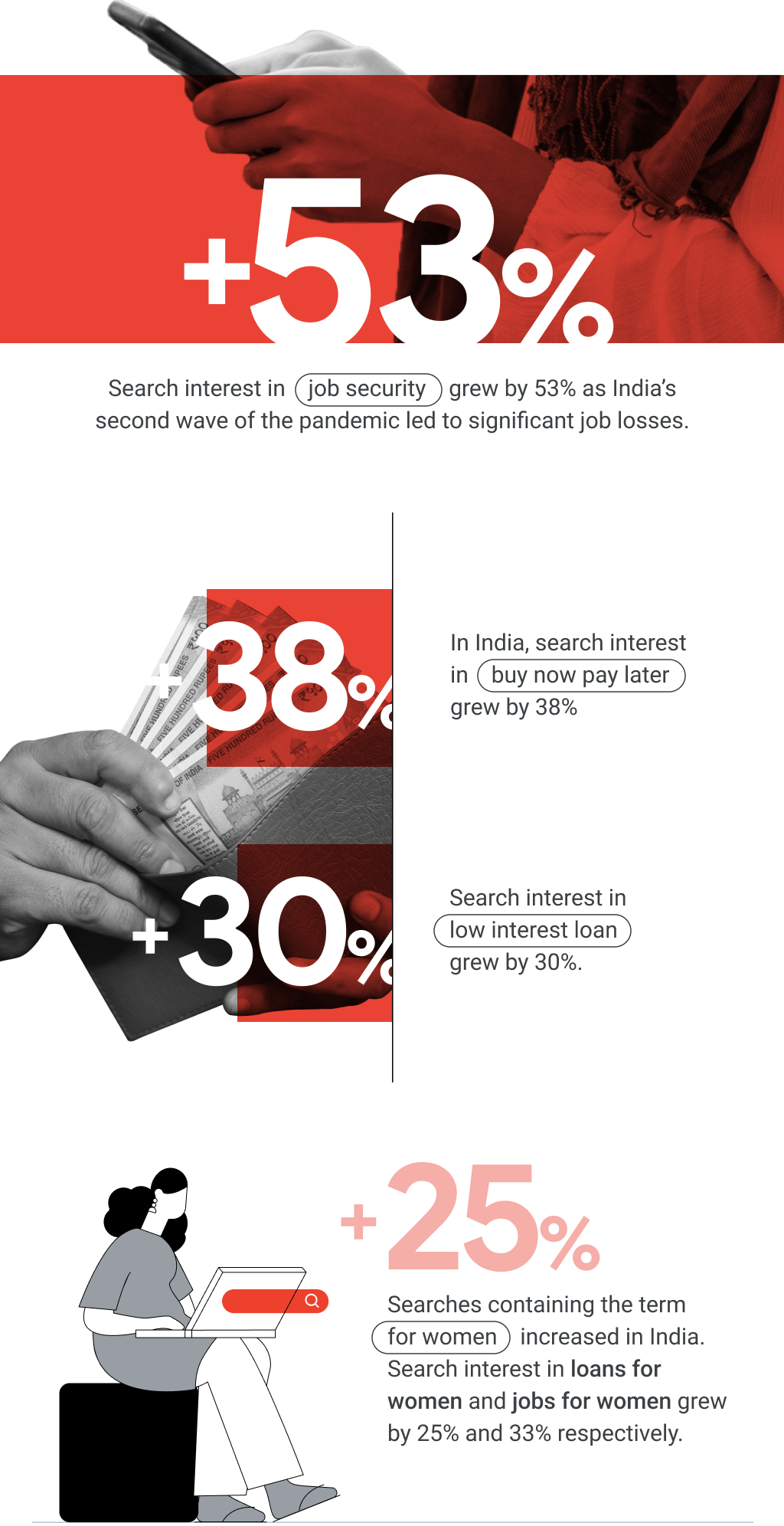
Social inequalities
The general APAC region is still lagging behind the global average when it comes to the importance of equal rights,45 but people are starting to become more curious about inclusion and equity. Continuing from 2020, searches reveal this nascent stage of exploration and awareness growing in APAC.
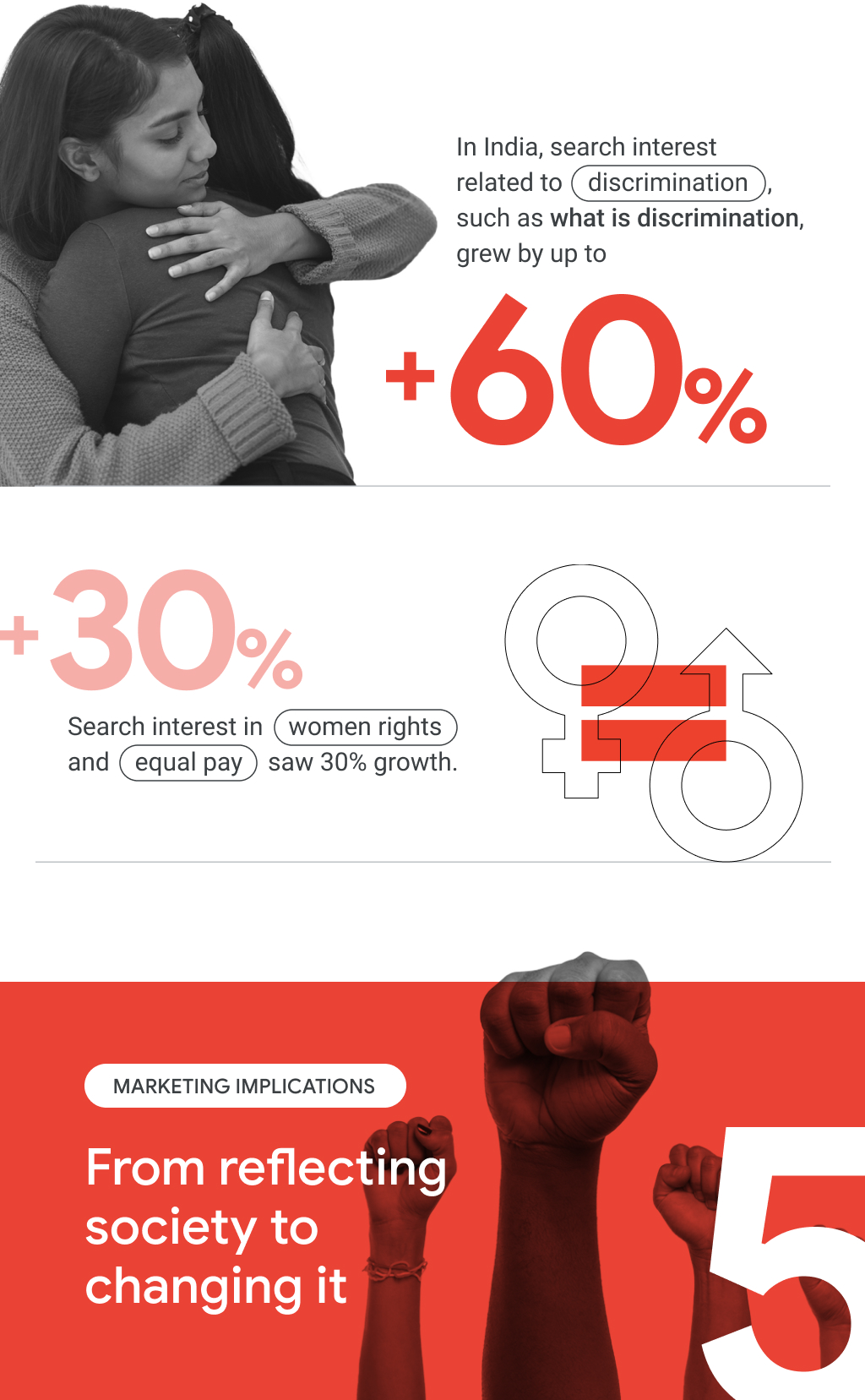
Creating real change is not just about ensuring diversity and inclusion, it is about taking action towards ensuring equity as well. While the pandemic has impacted everyone’s lives, not everyone has been affected in the same way, and rising searches reflect the need for help. Now, reaching customers takes more than simply reflecting society. Brands are also expected to take actions to shape it.

“With four converging global crises over the last year - Covid-19, economic insecurity, financial/health inequities and systemic racism - brands that take a stand get a giant boost in trust. This evolved role for brands offers a new opportunity for brand marketers and real risk if they fail to recognize consumers’ call for brand action.”


Don’t let language be a barrier.
Engage your global audience with a full language experience that conveys your brand, reputation and trustworthiness. This might entail having translation options for your web content, or adopting voice assistance to make interactions easier for your customers, regardless of literacy levels.

Apna, a professional networking platform, enables job seekers to interact in their first language and in turn, build up their confidence. More than half of its users opt for vernacular languages when searching for opportunities and growing their networks. The app is currently available in 11 Indian languages across 28 cities.

Google’s Multitask Unified Model (MUM) has the potential to break down language barriers by transferring knowledge across languages. MUM can learn from sources in a foreign language and use those insights to find the most relevant results in your preferred language.
Google Meet has launched live translated captions to help video calls be more global and inclusive. This equalizes information sharing, learning, and collaboration.

Help close technical, financial, and accessibility gaps.
Keep in mind that your quest for operational efficiency and digital transformation isn’t leaving some of your customers behind. Not all users will have the same digital savviness levels, especially as more new users come online. Indeed, many new internet users still struggle with basic tasks.
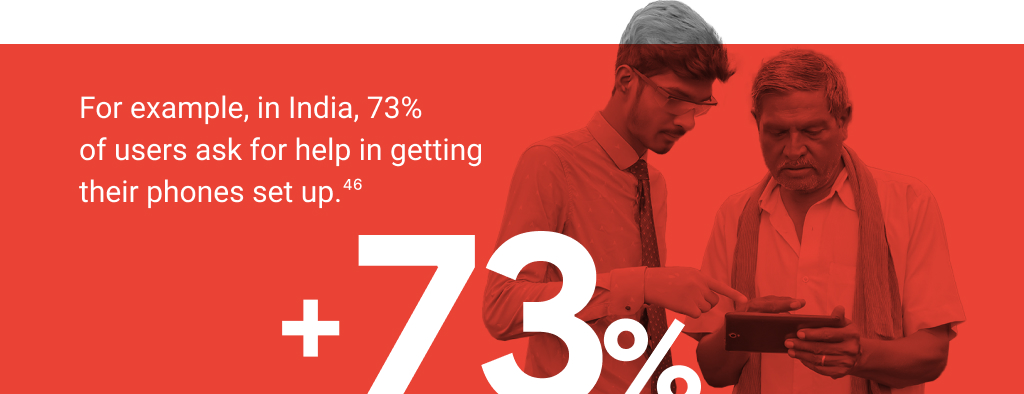
Look at your engagement metrics as indications of how your online platforms or services are used. By paying attention to potential drop-off points, you can get insights on how to improve not least the onboarding experience for customers, but also the fundamental user experience.

Refyne aims to reduce the financial stress of India’s salaried workers by providing them with access to earned wages before payday. The app, available in nine Indian languages, eschews monthly payments, interests, and penalties.
Goodbudget, a budgeting app, offers free educational resources like online courses, podcasts, and even a forum for consumers to learn more about money management.
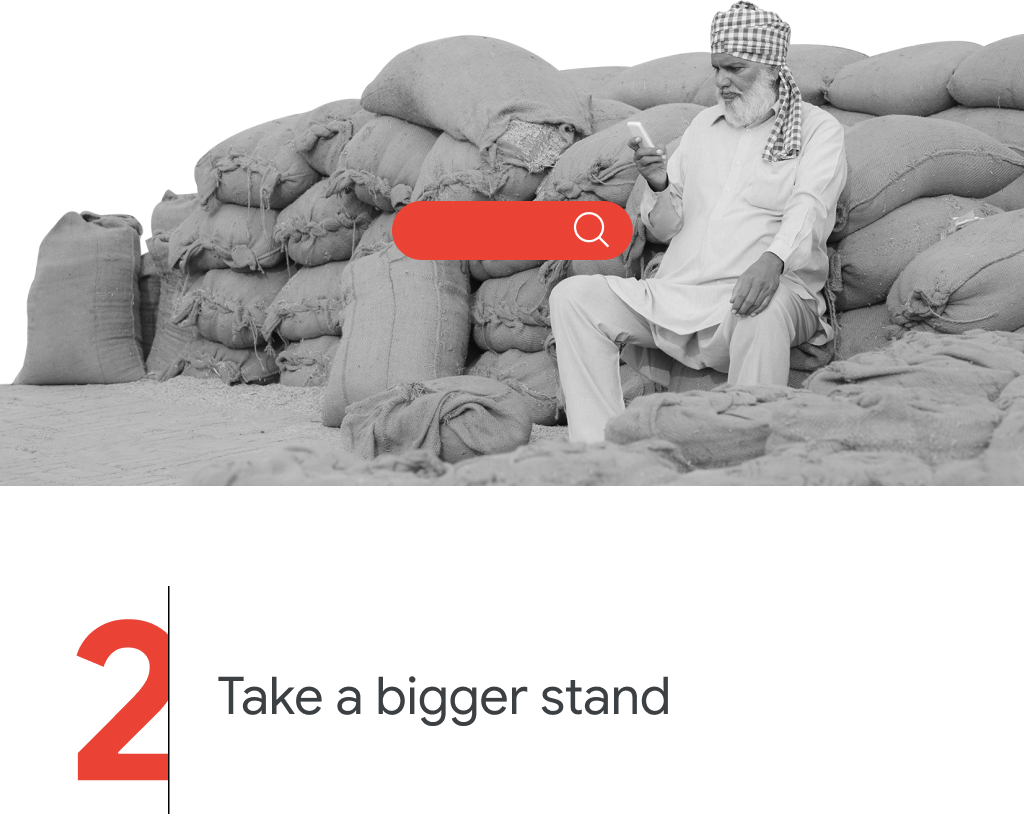
Consumers are drawn to brands that focus on the “we” over the “me.” While 63% of consumers surveyed were more attracted to “brands that focus on making the world a better place,” only 37% said they preferred “brands that focus on making me a better person.”47 The same survey found that 86% of respondents expect brands to act beyond their product or business,48 suggesting that people are increasingly looking for brands that focus on contributing to society and the rest of the world.
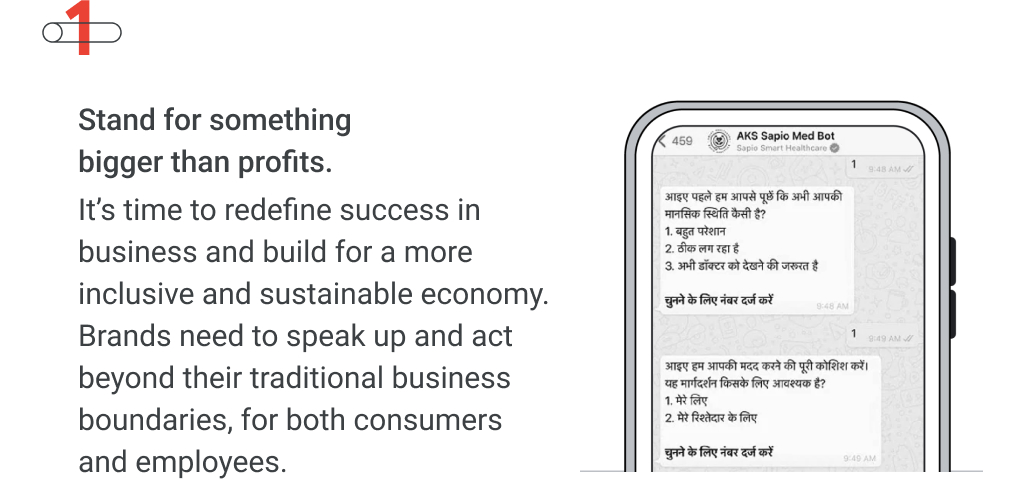
Sapio Smart Healthcare, a division of the government advisory firm Sapio Analytics, has created an artificially intelligent and empathetic chatbot to assist rural users with medical consultations. The AKS Sapio Med Bot is part of the organizations broader plan to create a comprehensive and accessible healthcare ecosystem

Build inclusive marketing strategies that benefit both people and your bottom line.
Consumers are 4.5X more likely to buy from a brand if it addresses human rights, and 3.5X more likely if it takes on economic inequality.49 As marketers, we are in a unique position to drive authentic and meaningful change, and it starts with the teams we build and the stories we tell. Get inspired by tips for inclusive marketing best practices.

Miss Piggy Banks caters to young millennials, especially women, who want greater access to financial advice. Launched in 2020, the India-based company makes investing less complex and more interesting for its users, including first-time investors, by offering them easy access to financial experts.
